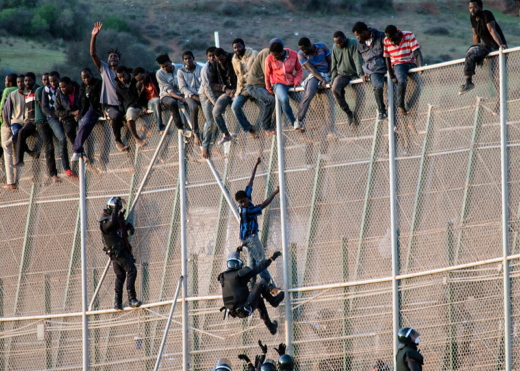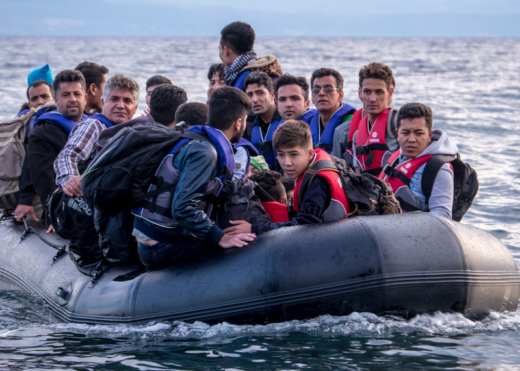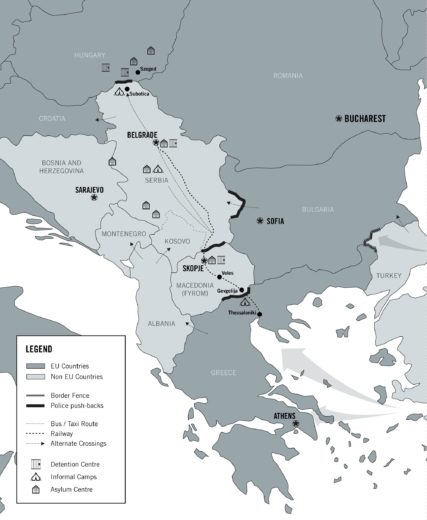The attacks in Paris on 13 November 2015 shocked people of all faiths and backgrounds. Sadly, they also caused a backlash against refugees – including people fleeing atrocities carried out by the group known as Islamic State.
Now more than ever, we must stand in solidarity with everyone who has suffered violence and war – including refugees. Sealing off Europe’s borders isn’t the answer.
EU governments are already spending billions on fences, high-tech surveillance and border guards. As Amnesty’s new research shows, this strategy simply doesn’t work: While 280,000 refugees and migrants entered the EU in 2014, 1,008,616 people arrived by sea last year.
Europe’s fortified borders are putting some of the world’s most vulnerable people in terrible danger, creating a humanitarian emergency. Thousands are getting trapped along Fortress Europe’s fences, forced to walk for weeks and months, sleeping outside in the cold.
People will keep fleeing as long as raging conflicts and brutal regimes exist in countries like Syria, Afghanistan and Iraq. Other countries, including those in the EU, have a duty to protect them, and not let fear win.
We’ve witnessed enough violence to know that fear is not the answer.
Amnesty International

Fear and fences
A shocking 90% of those arriving in Europe this year risked death coming by sea. They are braving the deadly waves for a reason: it’s the only border still possible to cross if you don’t have the right travel documents.
Every day brings new headlines about refugees drowning trying to reach Greek islands like Lesvos and Kos. By the end of 2015, 851,319 people had taken this route. That’s because Greece’s land border with Turkey – now hosting more than 2.2 million Syrian refugees – is almost completely closed off. So is Turkey’s border with Bulgaria further north.
Along with Hungary’s brand new border fences, these are the latest examples of a European trend that started in Spain 20 years ago: forcing people to turn back instead of assessing their asylum claims, and building higher walls with ever sharper razor wire to cut the feet of anyone desperate enough to try climbing over.
Amnesty and other organizations have rung loud alarm bells about this for years, warning of a man-made recipe for disaster. And from the start of 2015, the crisis finally unfolded.

A hellish welcome in Greece
As Europeans prepared for their summer holidays, we warned of the appalling situation meeting asylum-seekers arriving by sea from Turkey to Greece’s islands of Lesvos and Kos. The local authorities were either unwilling or incapable of providing basics like food, water, toilets or housing.
Local people have been doing what they can to help the newcomers arriving in their thousands, despite tensions running high. But it was evident that the Greek government couldn’t cope with the influx, and that its EU neighbours could do much more to help.
But it wasn’t until 2 September, when three-year-old Alan Kurdi from Syria was photographed drowned on a Turkish beach, that the unravelling situation received global attention.
The world’s unfolding refugee crisis – in pictures

Early warning signs in the Balkans
As early as July, we reported on refugees and migrants taking dangerous routes to northern Europe via the Balkans – passing through the former Yugoslav Republic of Macedonia towards Serbia and Hungary.
The world watched in disbelief as riot police at Macedonia’s border with Greece used stun grenades to stop refugees heading for Serbia. By 21 August, the border had been sealed and military back-up brought in.
We met many people, including families with children from Syria, who had walked for days and weeks, only to find themselves trapped in a limbo, unable to cross borders legally, seek asylum, or even receive food or find a place to sleep.

